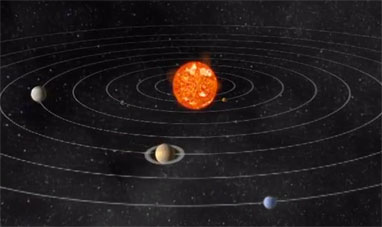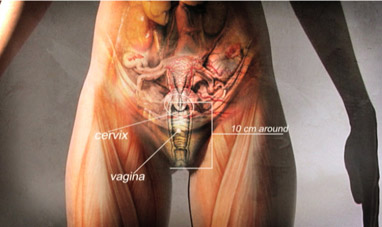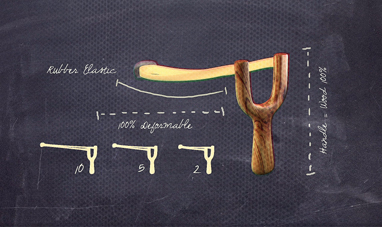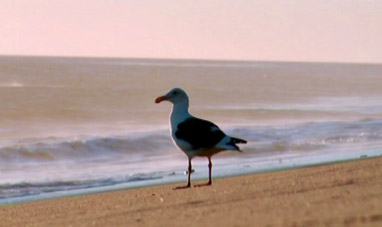Archimedes’ Principle is a law of physics concerning bodies immersed in fluids, either liquid or gas. It asserts that a submerged body is pushed toward the surface by hydrostatic charge, equal in magnitude to the weight of fluid displaced by the body in question. For example, when a ball is submerged in water, the quantity of liquid it displaces is equal to the ball’s mass. Since the displaced liquid weighs more than the ball — which is filled with air — the ball will be pushed to the surface and float. Even a stone thrown into the water displaces its own weight in water. But since the displaced water weighs less than the stone, the hydrostatic charge of the displaced water is not sufficient enough to allow the stone to float. Archimedes lived in Syracuse, Sicily between 287 and 212 BC.
Considered one of the greatest scientists of antiquity, he made fundamental contributions to mathematics, physics, and engineering. Well-known for his work with levers and pulleys, he also invented the Archimedean screw, an instrument capable of pushing water upwards. His studies of hydrostatic energy were published in a treatise known as On Floating Bodies. The Roman architect Vitruvius wrote that Archimedes first got his idea about hydrostatic motion while bathing, noticing the displacement of water and the push he felt against his body as he entered the tub. Thrilled, Archimedes jumped out of the tub, exclaiming “eureka!”, or “I’ve got it!” He had found the answer to a riddle posed to him by King Hiero II, who asked him to determine if a crown was pure gold or if it also contained silver. Archimedes was asked to do this without damaging the crown.
He knew that different materials of the same weight could have different volumes, or densities. This means that a one-kilo piece of gold would be smaller than a one-kilo piece of silver. Archimedes noted that a gold object of the same weight as the crown displaced less water than the crown itself, so the crown couldn’t have been made from pure gold. Archimedes’ Principle is often used to build ships. Even if it is built from heavy materials, a ship floats because its interior contains empty spaces that increase the overall volume of air inside. What allows the ship to float is the fact that a quantity of water equal to the ship’s weight is displaced.
Considered one of the greatest scientists of antiquity, he made fundamental contributions to mathematics, physics, and engineering. Well-known for his work with levers and pulleys, he also invented the Archimedean screw, an instrument capable of pushing water upwards. His studies of hydrostatic energy were published in a treatise known as On Floating Bodies. The Roman architect Vitruvius wrote that Archimedes first got his idea about hydrostatic motion while bathing, noticing the displacement of water and the push he felt against his body as he entered the tub. Thrilled, Archimedes jumped out of the tub, exclaiming “eureka!”, or “I’ve got it!” He had found the answer to a riddle posed to him by King Hiero II, who asked him to determine if a crown was pure gold or if it also contained silver. Archimedes was asked to do this without damaging the crown.
He knew that different materials of the same weight could have different volumes, or densities. This means that a one-kilo piece of gold would be smaller than a one-kilo piece of silver. Archimedes noted that a gold object of the same weight as the crown displaced less water than the crown itself, so the crown couldn’t have been made from pure gold. Archimedes’ Principle is often used to build ships. Even if it is built from heavy materials, a ship floats because its interior contains empty spaces that increase the overall volume of air inside. What allows the ship to float is the fact that a quantity of water equal to the ship’s weight is displaced.
RELATED


HORSE


BEAR


AIDS


COMMON COLD


THE SOLAR SYSTEM


TEETH


TORTOISE


BARRACUDA


BLACK HOLES


THE FEMALE REPRODUCTIVE SYSTEM


GARLIC


GOOGLE


GIRAFFE


THE DIGESTIVE SYSTEM


LOTUS PLANT


ALFRED NOBEL


QUANTUM PHYSICS


CARNIVOROUS PLANTS


BENJAMIN FRANKLIN


NEBULAE


EBAY


NATURAL RUBBERS


PULSARS


METEORITES


GULL


OSTRICH


EOLIC


HERMIT CRAB


H2O


CITRUS FRUIT


TWITTER


TARANTULA


THE PRAYING MANTIS


GROUPER


FACEBOOK


PENGUIN
